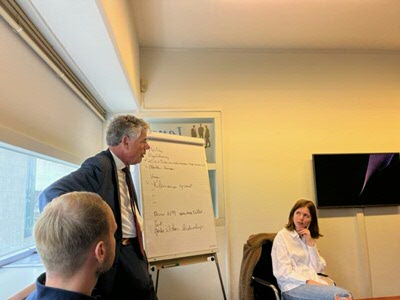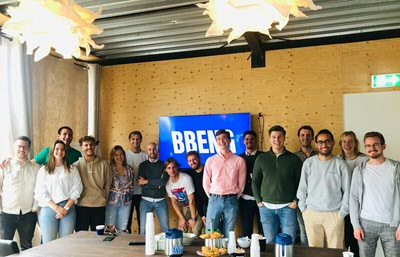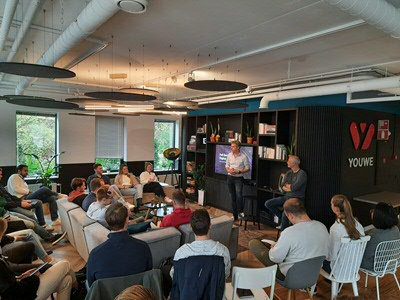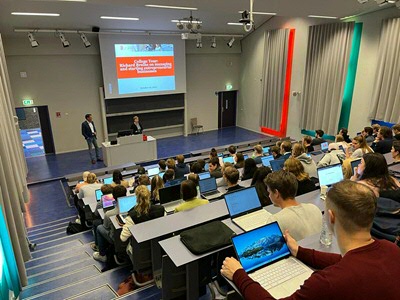Lecturer's blog 13: "A little less conversation, a little more action! The value of student-practitioner interactions in teaching" by Evelien Croonen
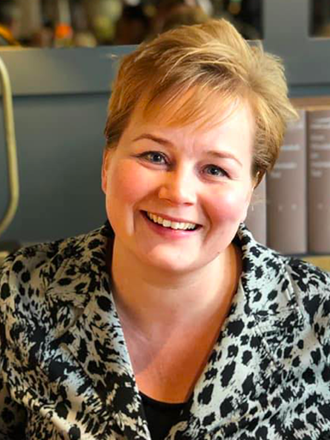
‘A little less conversation, a little more action!’ This is the first line of a song by one of my favorite artists, Elvis Presley. What does this line have to do with teaching? In my view, a lot! Good teaching means making students active learners. One useful way to do that – at least in the field of business and management – is to have students interact with all kinds of practitioners. In this blog, I call for more student-practitioner interactions in our teaching, and I share some of my experiences in facilitating such interactions.
Student-practitioner interactions: why?
In my 20 years of teaching experience, facilitating student-practitioner interactions has always been one of the key elements. Why? Because I believe that our students learn the most if we activate them. More specifically, students learn the most if they can talk to practitioners to assess the relevance and validity of theories in different contexts. Interactions with practitioners improve student employability as such interactions increase their knowledge, academic and personal skills, practical experiences and their perspective on career options. In sum, we need a little more action!
Student-practitioner interactions: College Tours, Small Business Safaris, and Living Teaching Cases
In the past years, I have created more ‘action’ in study programs and courses by engaging practitioners in different ways. My field is small business and entrepreneurship. More specifically, my courses are focused on the micro-level, where I basically aim to answer the following questions: What strategic and managerial challenges do small business owners/entrepreneurs face in running their businesses, what strategies do they adopt to deal with those challenges, and with what (performance) effects? These questions ask for active interactions with small business owners, entrepreneurs and their stakeholders, such as consultants, investors, policy makers, and banks. Of course, these interactions need to be organized and structured so that they clearly fit with intended learning outcomes. I would like to briefly highlight a few ‘formats’ that I have used to organize student-practitioner interactions.
First, one of the ‘easiest’ ways to have practitioners involved in your teaching is by means of guest lectures. This hardly requires an explanation… You invite practitioners to talk about their jobs and how they experience issues in practice. This has always been an important instrument in my teaching, but in the past years I have moved towards ‘College Tours’, inspired by a Dutch television show. In such College Tours I am the ‘presenter’ and I take the lead while students and I ask questions to our guest on the basis of the course literature. Big advantages: I have somewhat more ‘control’ over the lecture contents and it requires less preparation from the practitioner. A variation to this format is to organize an event with multiple practitioners. Some years ago, I was part of a team that organized ‘Business Meets University’ events; afternoon events with a keynote speaker and several student-practitioner brainstorm sessions. These events facilitate knowledge sharing between students and practitioners and enlarge both their professional networks.
A second format for student-practitioner interactions is something that my colleague Michael Wyrwich and I recently introduced in the Small Business & Entrepreneurship Master program: Small Business and Start-Up Safaris. Michael and I got a Teaching Innovation Grant for this, and in October 2022 our very first Small Business Safari took place, which will be followed by a Start-Up Safari to take place in March 2023. The basic idea of our Safaris is that students can interact with small business owners/entrepreneurs in the business owners’/entrepreneurs’ own ‘habitats’.
A third and final format for student-practitioner interaction that I would like to discuss here is the use of teaching cases, preferably what I call ‘Living Teaching Cases’. In the past years, my colleague Maryse Brand and I have developed two teaching cases in close connection with Dutch practitioners. I mostly used these cases when teaching in an international Master Program in France. However, during COVID, Maryse and I used one of our teaching cases in our course, and I found out that students were very curious about what happened after the case events. So, I contacted one of the key persons in our case to see what decision the business owners made and how it has affected their business. This made the case livelier for the students, and makes me think about developing ‘Living Teaching Cases’ (this is work-in-progress…).
There is much more to tell about the formats, but it is out of the scope of this blog. If you like to know more, please contact me… Next to action, I am always open to conversation!
Student-practitioner interactions: integration in courses and programs
Now, I can almost hear you thinking: “Yes, this is all nice, but this will take a lot of time and effort…”. Indeed, it takes some effort to engage practitioners in teaching, but it is very rewarding and energizing! I truly believe that student-practitioner interactions improve educational quality. I would therefore like to share some of my major tips & tricks regarding student-practitioner interactions:
- Deliberately think about the amount of and the formats of student-practitioner interactions at the program level. We do not want to overdo it! In the Small Business & Entrepreneurship Master Program, we have developed a matrix to keep track of our student-practitioner interactions in different courses over time.
- Try to ‘standardize’ templates for student-practitioner interactions so that you can re-use them for multiple years. For example, I do have templates for College Tours, brainstorm sessions, and, since recently, for Business Safaris.
- Keep your students close, but keep your alumni closer! In my experience, alumni are the best ambassadors of our study programs. In the past years, I have used LinkedIn as an instrument to build a ‘pool’ of alumni whom I can easily contact when organizing student-practitioner interactions.
An afterthought: let’s keep the conversations, but with a little more action
As I was writing this blog, I realized that you may now have the idea that ‘conversation’ is not important anymore. This is not what I intend to say: we will always need conversation (that is: sharing our knowledge on theories and latest scientific insights), but it would in my view be stronger when combined with action. So, Elvis Presley’s line should rather be: ‘Let’s keep the conversation, but a little more action, please!’
I would like to pass the torch for the next blog to my colleagues from the Innovation Management & Strategy Department: Eveline Hage and Oskar Roemeling. They are planning to record a podcast on teaching.
| Last modified: | 20 December 2022 10.23 a.m. |

